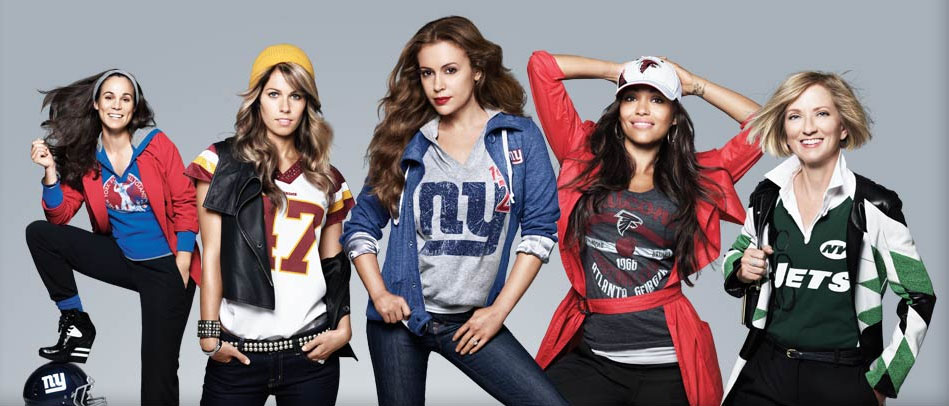 |
| Sports spectatorship usually done by men, has only recently had more women's involvement. Gerhard Falk attributes this delayed involvement to previously discriminatory divisions in sports
programs at schools which did not support female inclusion in sports (134). It was not until 1972 when this discrimination
was no longer deemed legal in high schools and colleges that a higher percentage of women began participating in athletics. The
NFL has also encouraged women to be football fans and have workshops that encourage women to learn the history and basics
of football. The result is that a successful 43% portion of NFL fans are now female. However, women's involvement in sports spectatorship
takes shape in a drastically different visual form. Female fans rarely paint their face or wear complete costumes or masks.
Nor do they behave as aggressively or brutish.
Female spectators are now a viable market segment for apparel and accessories and NFL teams and sportswear labels are providing them with endless options. The NFL has started an aggressive marketing campaign featuring celebrities, models, and industry representatives posing similarly to fashion ads with slogans reading, "Who says football isn't pretty?" and "Style is the best defense." Most of the apparel is smaller versions of the athlete's jerseys and tighter fitting, women's cut garments with the team logos printed on them. The connotative meanings behind the slogans suggest that women in the world of football should be pretty and that using their style and femininity is their best defense in doing so. The third image without any writing is of Tavia Hunt wife of Kansas City Chiefs owner Clark Hunt and Nicoletta Ruhl, manager of the San Diego Chargers, and granddaughter of owner Alex Spanos wearing their respective team's t-shirts under presumably high fashion coats and hats. All of the pictures of the women wearing their team apparel incorporate that one piece of clothing into their overall outfit. |
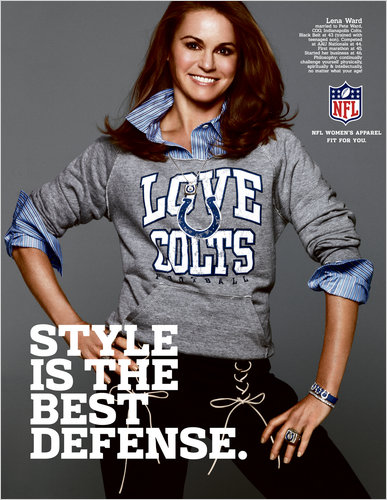 |
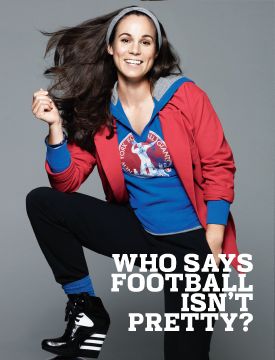 |
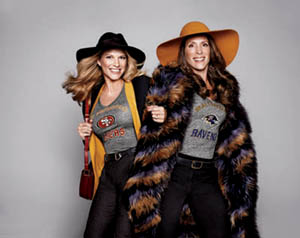 |
| The ultimate goal is to allow the women to hold onto their femininity and accentuate their figure while supporting their team. This socially constructed representation of what the female sports fan should look like is reinforced not only by the fashion industry but also by the women working in the sports entertainment industry. This includes cheerleaders, sports broadcasters, and even some athletes. Women are constantly objectified and coded as passive beautiful bodies on display for men to actively look at with pleasure. This fetishistic scopophilia allow men to find pleasure in looking at these women as sexual objects of desire while women view the sexualized females and identify with them in hopes to be like them. Women in the field submit to this voyeurism by presenting themselves along gendered roles of femininity (Rose, 178). |
 |
| Unfortunately the very image the female sports broadcasters are forced to conform to are the very reasons they experience extreme cases of objectification, marginalization and sexual harrasment. The male dominated industry often inundates these women with derogatory comments and choose to use terms of endearment condecendingly such as Honey and Sweetie. They will also subject women to tests over obscure facts to question their sports knowledge but even then, accuse women of performing sexual acts of favor to explain their success. Because the nature of the sports world is constantly reaffirming masculine traditions, the opportunities for women to succeed are fewer and more difficult to attain than in other fields. (Grubb 87-92). In fact in 2001 women comprised of only 13% of employees in sports journalism. Many of those postiions are of the clerical and administrative nature (Hardin, 22). The pictures below will show that most of the female sports journalists present themselves in a glamorous manner with long luscious hair signifying seductive beauty or narcissm (Rose, 115) and fully made up with make up, accessories and fashionable clothing. They make sure that they are representing their bodies within the boudaries of femininity. Their appearance is youthful and and their bodies are thin. More often than not they are consistent with the stereotype of normalized whiteness and have features consistent with conventional notions of beauty. |
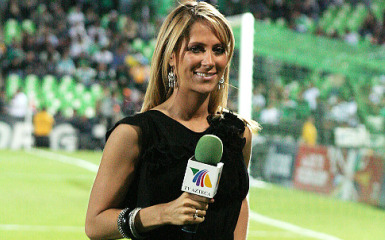 |
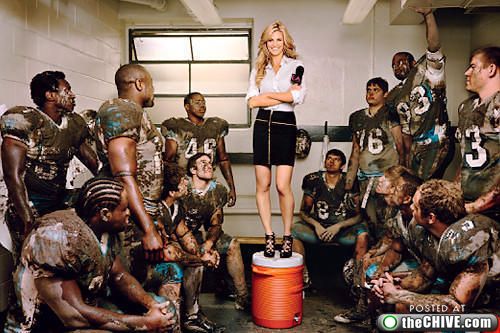 |
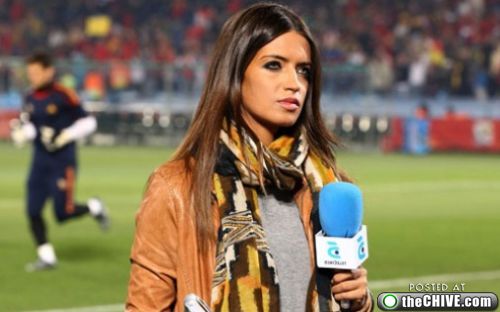 |
|
|